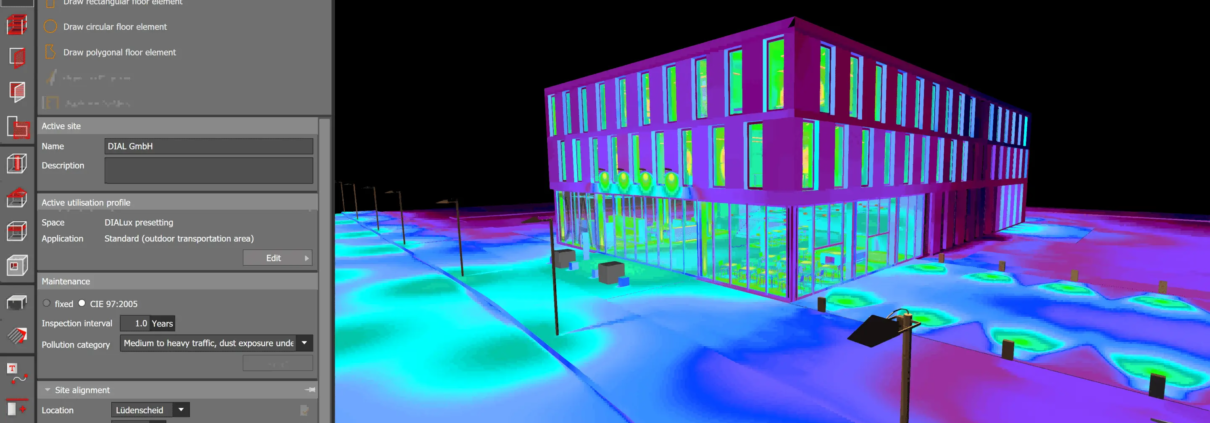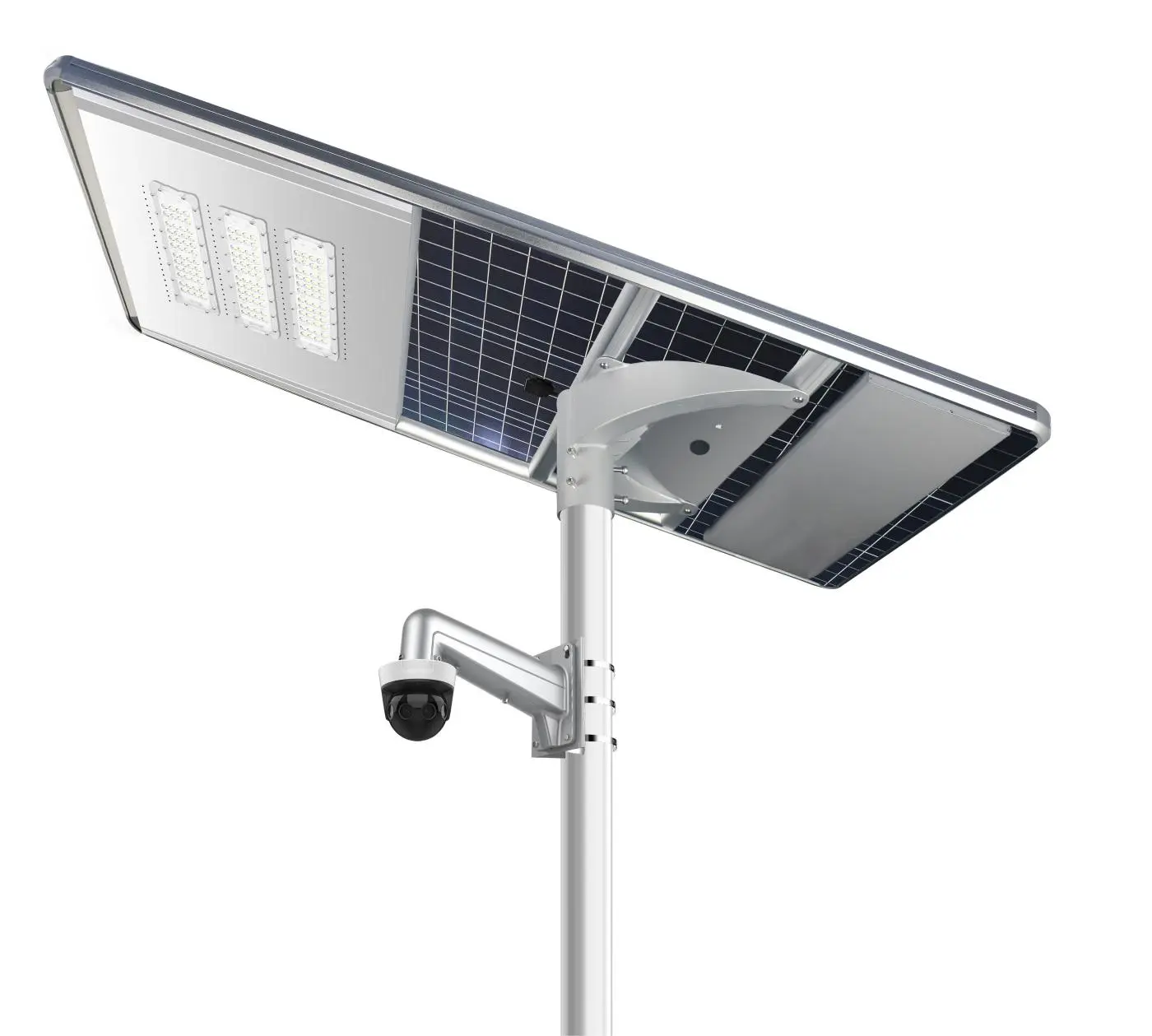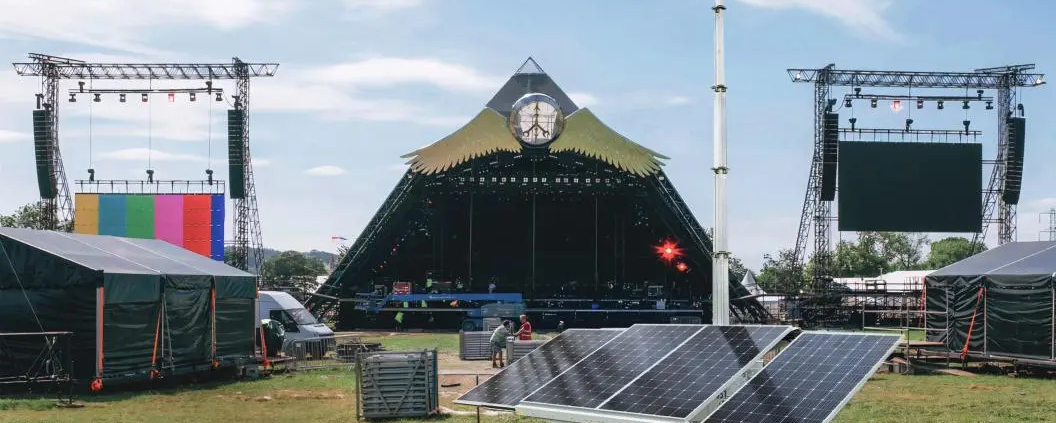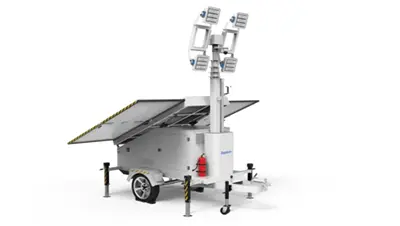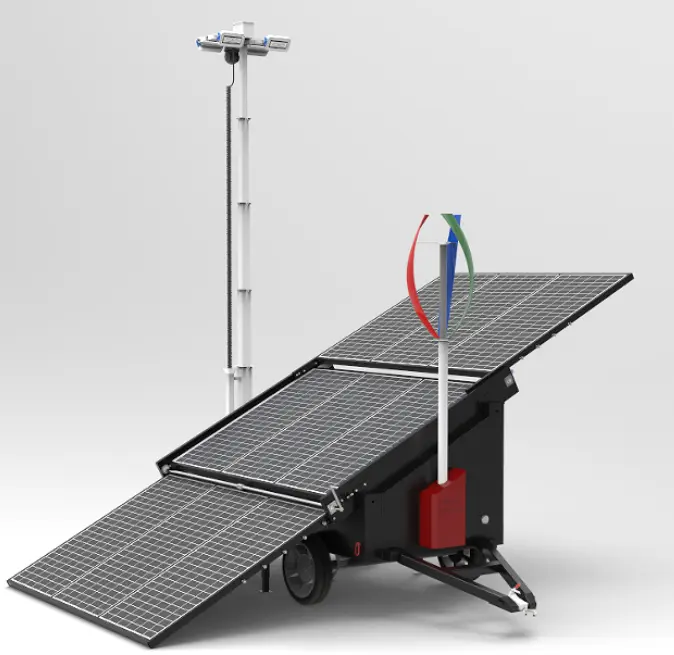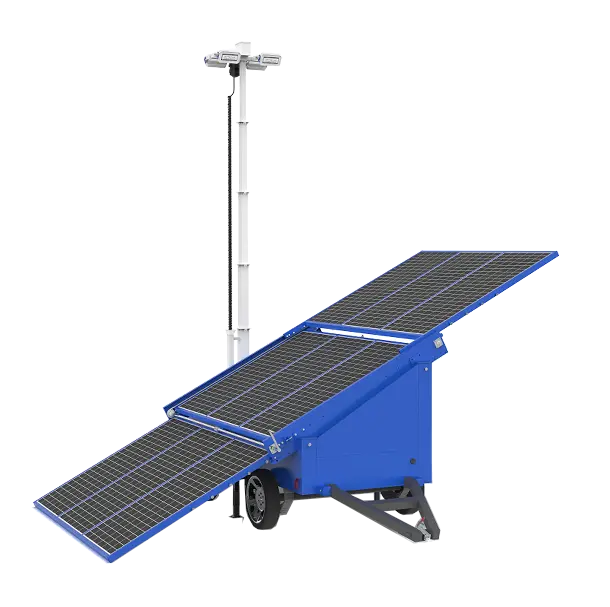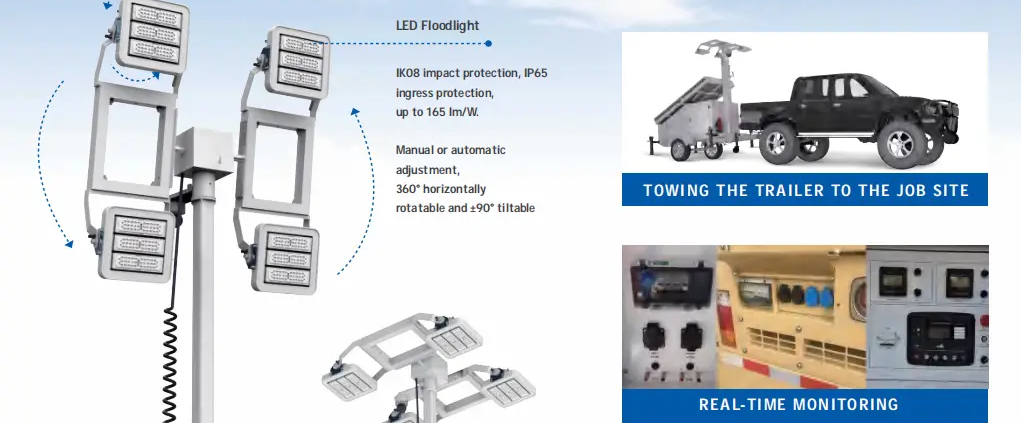Solar Street Light Color Rendering Index (CRI) Application Guide – Manufacturer’s Perspective
Understanding the Color Rendering Index (CRI) in Solar Street Lights
The Color Rendering Index (CRI) is a crucial parameter for evaluating the color rendering performance of solar street light sources. The higher the CRI, the better the color reproduction, and the visual effect is closer to natural light. This article analyzes the CRI values of different types of light sources and their impact on visual quality.
As a solar street light manufacturer, we understand that CRI directly affects lighting effects and user experience. Below, we provide practical advice from the perspectives of technical principles, scene adaptation, and product selection.

1. Comparison of Light Source Types and Color Rendering Characteristics
| Light Source Type | CRI (Ra) | Spectral Characteristics | Adaptability Assessment (Solar System) |
|---|---|---|---|
| Incandescent Lamp | 95-100 | Continuous spectrum, but lacks blue light | Best color rendering but only 15lm/W efficiency, requires 3x battery capacity, now obsolete |
| Fluorescent Lamp | 60-85 | Line spectrum, lacks red light | Difficult to start at low temperatures (-10℃ brightness drops by 40%), not suitable for cold regions |
| High-Pressure Sodium Lamp | 20-25 | Narrow spectrum yellow light, severe color distortion | 100lm/W+ efficiency, only used in remote low-cost projects |
| LED Lamp | 70-98 | Adjustable full spectrum/segmented spectrum | Mainstream choice, high CRI models offer 130lm/W+ efficiency, controllable energy consumption |
2. Impact of Solar Street Light CRI on Actual Effects
Safety and Functionality
- Low CRI (Ra<70): Red warning signs ΔE color difference >15 (international requirement ΔE<5), face recognition distance shortened by 30%.
- High CRI (Ra≥80): Vegetation layering improves by 50%, reduces “spooky feeling” complaints at night.
Economy and Energy Efficiency
- For every 10-point increase in Ra: Requires an 8% increase in battery capacity (e.g., 50W street light Ra70→Ra80 requires an additional 10Ah battery).
- Cost balance: High CRI LED premium is about 0.8-1.2 yuan/W, but maintenance cycle extends by 2-3 years.
Commercial Value
- Ra≥90: Product color saturation increases by 18%, night-time consumer conversion rate increases by 12% (measured data from commercial squares).

3. Scenario-Based Selection Scheme
| Application Scenario | Recommended Ra Value | Key Technical Solution | Cost Sensitivity |
|---|---|---|---|
| Suburban Main Road | 70-75 | 3000K warm white light + asymmetric lens, reduces blue light spill | ★★☆☆☆ |
| Old Residential Area | 80-85 | R9 supplementary light chip (deep red restoration) + anti-glare design | ★★★☆☆ |
| Cultural Tourism Landscape Belt | 90-95 | Full spectrum LED + RGBCW intelligent color adjustment, restores ancient building textures | ★★★★☆ |
| Industrial Park | 65-70 | High efficiency low CRI models, emphasizes uniform illumination | ★☆☆☆☆ |
Engineering Suggestions:
- Key area testing: Use X-Rite CA410 spectrophotometer to measure R9 (deep red) and R12 (deep blue) performance.
- Hybrid solution: Basic module (Ra70) + key supplementary light module (Ra90), balances cost and effect.
4. Technical Optimization and Quality Control Points
Spectral Enhancement Technology
- Violet-excited LED: Spectral continuity and similarity to sunlight reaches 92%, Ra≥95 and blue light peak reduced by 40%.
- Dynamic dimming: Automatically switches to low CRI mode (Ra85→70) during low traffic periods, extends battery life by 30%.
Attenuation Control
- Annual attenuation standard: High-quality products CRI annual decline ≤1.5, low-quality products can reach 5-8 points.
- Compensation circuit: Built-in current regulation module, offsets color rendering decline caused by LED chip aging.
Optical Design
- Compound lens: Secondary light distribution reduces invalid scattering, increases effective color rendering light by 15%.
5. User Purchase Suggestions
- Certification standards: Request CIE S 025/E:2015 test report, focus on Rf (fidelity) and Rg (gamut index).
- Warranty terms: Choose manufacturers that promise “Ra decline ≤3 within 5 years”, prioritize products supporting modular upgrades.
- On-site verification: Use standard color cards (e.g., ColorChecker 24 colors) to compare lighting effects before installation.
Case reference: A certain ancient town project used LED with Ra95+R9>60, increasing night-time visitor stay time by 1.2 hours and shop revenue by 18%.
As a manufacturer, we recommend users choose a “sufficient and economical” color rendering solution based on actual needs, avoiding the cost waste brought by blindly pursuing high parameters. For customized solutions, we can provide spectrum simulation and energy consumption calculation services.
Tag: Solar Street Light CRI
LUXMAN SOLAR STREET LIGHT MANUFACTURER
What makes Luxman different?
Luxman Light puts its customers and quality first. The team boasts a wealth of experience with decades of hands-on knowledge in the lighting and new energy space.
As a global leader in photovoltaic lighting, Luxman partners with businesses to customize innovative power and sustainability solutions that are informed by many years of experience at the cutting-edge of photovoltaics.
+86 13246610420
[email protected]

Key Formulas for Solar Street Light Design
This article summarizes essential formulas commonly used in solar street light design, integrating national standards and practical case studies from various papers:
1. Average Road Illuminance Calculation
Formula:
Eavg = (N × Φ × U × K) / A
- Parameter Description:
- N: Number of fixtures
- Φ: Total luminous flux per lamp (lm)
- U: Utilization factor (0.4-0.6)
- K: Maintenance factor (0.7-0.8)
- A: Road area (m2) = Road width × Lamp spacing
Example:
6m wide road, lamp spacing 30m, using 10,000 lm LED, one-sided lighting:
Eavg ≈ (1 × 10,000 × 0.5 × 0.75) / (6 × 30) ≈ 20.8 lx

2. Solar Panel Power Calculation
Formula:
Ppv = Qday / (Hpeak × ηsys)
- Parameter Description:
- Qday = PLED × Twork (Daily energy consumption, Wh)
- Hpeak: Local annual average peak sunlight hours (check meteorological data, e.g., Beijing 4.5h)
- ηsys: System efficiency (0.6-0.75, including line losses, controller losses)
Example:
Load power 80W, daily operation 10h, Shanghai Hpeak=3.8h:
Ppv ≈ (80 × 10) / (3.8 × 0.65) ≈ 324 W
3. Battery Capacity Calculation
Formula:
C = (Qday × D) / (DOD × ηbat × Vsys)
- Parameter Description:
- D: Number of consecutive cloudy days (usually 3-5 days)
- DOD: Depth of discharge (0.5 for lead-acid batteries, 0.8 for lithium batteries)
- ηbat: Charge/discharge efficiency (0.85-0.95)
- Vsys: System voltage (12V/24V)
Example:
Daily consumption 800Wh, 24V system, 3 days backup, lithium battery:
C ≈ (800 × 3) / (0.8 × 0.9 × 24) ≈ 138.9 Ah → Choose 150Ah battery
4. Solar Panel Installation Angle
Formula:
θ = φ + (5° to 15°)
- Parameter Description:
- φ: Local geographical latitude
- Winter optimization: latitude +10°~15°, summer optimization: latitude -5°
Example:
Nanjing latitude 32°, fixed bracket tilt angle set at 37° (32°+5°) to improve winter power generation.
5. Wind Pressure on Solar Panels
Formula:
F = 0.61 × v2 × A
- Parameter Description:
- v: Maximum wind speed (m/s)
- A: Wind-facing area of the photovoltaic panel (m2)
Example:
Panel area 2m2, design wind speed 30m/s:
F = 0.61 × (30)2 × 2 = 1098 N
Need to verify the wind resistance of the lamp pole and foundation.
6. Component Operating Voltage Correction (Temperature Effect)
Formula:
Vmp = Vmp(STC) × [1 + α × (T – 25)]
- Parameter Description:
- α: Temperature coefficient (approximately -0.35%/°C for monocrystalline silicon)
- T: Actual operating temperature (°C)
Example:
Nominal component voltage 18V, operating temperature 60°:
Vmp ≈ 18 × [1 – 0.0035 × (60-25)] ≈ 15.3 V
7. Voltage Drop Compensation Due to Temperature
Formula:
ΔV = Nseries × α × ΔT × Vmp(STC)
Example:
3 series-connected components, each Vmp=30V, temperature difference 35°:
ΔV ≈ 3 × (-0.0035) × 35 × 30 ≈ -11V
Need to adjust the MPPT voltage range.
8. Solar Panel Capacity Optimization Design
Empirical Formula:
Ppv(opt) = 1.2 × Ppv
- Consider shadowing, dust loss (efficiency reduction of 10-20%)
- When paralleling multiple components, increase bypass diodes to reduce hotspot effects.
9. Typical Design Parameter Comparison Table
| Parameter | Reference Value | Standard Basis |
|---|---|---|
| Illuminance uniformity U0 | ≥0.4 (main road) | CJJ45-2015 Road Lighting Standards |
| Component tilt angle error | ≤±3° | GB/T 9535 Photovoltaic Module Standards |
| Battery cycle life | ≥1500 times (lithium battery) | GB/T 22473 Energy Storage Standards |
| Wind resistance rating | ≥12 levels (33m/s) | GB 50009 Building Load Code |
Note: Actual design should be combined with PVsyst simulations and DIALux lighting simulations, and validated through field tests.
LED Solar Street Light Design Guide (2025 Edition)
1. Solar Street Light System Design Composition and Selection Standards
1. Core Component Configuration
| Component | Functional Requirements | Selection Parameters |
|---|---|---|
| LED Light Source | Color temperature 4000-5000K, Color rendering index ≥70 | Luminous efficacy ≥150 lm/W, IP65 protection |
| Photovoltaic Panel | Monocrystalline silicon efficiency ≥22% | Power = Daily system consumption / (Local average peak sunshine hours × 0.7) |
| Battery | Cyclic life ≥1500 times | Capacity (Ah) = Daily consumption (Wh) / (System voltage × Depth of discharge × 0.9) |
| Controller | MPPT efficiency ≥95% | Overcharge/overdischarge protection, load time-based control |

2.Solar Street Light Key Design Parameter Calculations
1. Solar Street Lighting Demand Design
Formula:
PLED = E × A / (η × U × K)
- Parameter Explanation
- E: Design illuminance (Main roads 15-30 lx, Branch roads 10-20 lx)
- A: Illuminated area = Road width × Distance between lights
- η: Luminaire efficiency (0.8-0.9)
- U: Utilization factor (0.4-0.6)
- K: Maintenance factor (0.7-0.8)
Example: Road width 6m, distance between lights 25m, target illuminance 20 lx
→ PLED = 20 × (6 × 25) / (0.85 × 0.5 × 0.75) = 20 × 150 / 0.32 ≈ 94W
→ Choose a 100W LED module (Luminous flux 15,000 lm)
2. Solar Street Light Photovoltaic System Capacity Calculation
Steps:
- Daily Consumption: Qday = PLED × Working Time (e.g.: 100W × 10h = 1000Wh)
- PV Panel Power: PPV = Qday / (Hpeak × 0.7)
- Hpeak: Local average peak sunshine hours (e.g.: Beijing 4.5h)
- → PPV = 1000 / (4.5 × 0.7) = 317W → Choose 2 × 160W modules
- Battery Capacity: C = Qday / (Vsys × DOD × 0.9)
- Vsys: System voltage (usually 12/24V)
- DOD: Depth of discharge (80% for lithium batteries)
- → C = 1000 / (24 × 0.8 × 0.9) = 57.6Ah → Choose 60Ah lithium battery
3. Solar Street Light Structural Design Specifications
1. Pole and Component Layout
| Road Type | Pole Height (H) | Pv Panel Angle | Installation Distance |
|---|---|---|---|
| Branch Road | 4-6m | Latitude + 5° | 25-30m |
| Main Road | 6-8m | Latitude + 10° | 30-35m |
| Expressway | 8-12m | Adjustable bracket | 35-40m |
Wind Resistance Design: Flange size ≥ pole diameter × 1.2 (e.g.: Pole diameter 76mm → Flange 200×200×10mm)
4. Solar Street Light Intelligent Control Strategy
1. Multi-Mode Operating Scheme
| Time Period | Control Logic | Power Adjustment |
|---|---|---|
| 18:00-22:00 | Full power operation | 100% |
| 22:00-24:00 | Dynamic dimming (traffic detection) | 50-70% |
| 00:00-6:00 | Maintain minimum safety illuminance | 30% |
Backup Power: In areas with continuous rainy days ≥3days, configure a grid power complementary interface.
5. Installation and Maintenance Points
1. Construction Process
- Environmental Assessment: Avoid tree/building shadows, obstruction < 2 hours on winter solstice.
- Foundation Casting: Depth = Pole Height / 10 + 0.2m (e.g.: 6m pole → 0.8m deep).
- Wiring Standards: Photovoltaic cable voltage drop ≤3%, Battery burial depth ≥0.5m.
2. Operation and Maintenance Cycle
| Component | Inspection Items | Cycle |
|---|---|---|
| Pv Panel | Surface cleaning, Angle correction | Once a month |
| Battery | Voltage check (≥11.5V@12V) | Once a quarter |
| LED Luminaires | Lumen depreciation check (annual degradation <3%) | Once a year |
6. Economic Analysis
1. Cost Comparison (based on 6m pole)
| Item | Traditional Grid Lighting | LED Solar Street Light |
|---|---|---|
| Initial Investment | 8,000 Yuan | 12,000 Yuan |
| Annual Electricity Cost | 600 Yuan | 0 Yuan |
| Total Cost over 10 Years | 14,000 Yuan | 12,000 Yuan |
Payback Period:
Payback Period = (Price Difference / Annual Savings) = (12,000 – 8,000) / 600 ≈ 6.7 years
7. Typical Cases
Project Name: New Rural Road Lighting
Parameters Configuration:
- Road width 5m, staggered layout on both sides
- LED power 60W × 2, luminous flux 9,000 lm/unit
- Pv Panel 2 × 120W, battery 100Ah@24V
Performance Indicators:
- Average illuminance 18 lx, uniformity 0.48
- Continuous rainy backup 5 days
- Annual energy-saving rate 100%
8. Risk Control
- Over-discharge Protection: Controller sets voltage ≥10.8V (12V system).
- Theft Protection: Photovoltaic panel bolts use irregular structures, battery case welded and fixed.
- Extreme Weather: Photovoltaic panels hail resistance level ≥ Class 3 (25mm hail impact).
Appendix: Recommended Design Verification Tools
- PVsyst (Photovoltaic system simulation)
- DIALux evo (Lighting simulation)
- Meteorological data sources: NASA POWER / China Meteorological Administration Radiation Stations
Through this guide, a systematic approach can be achieved from illumination requirements to economic returns, realizing a low-carbon and highly reliable road lighting solution.
- Understanding Watts and Lumens: How to choose the right brightness
- What is Lux level? Determine the actual brightness of the luminaire
- Choosing the Right Color Temperature for Your Solar Street Light
- How to calculate the height and distance of solar street light?
- What battery is best for solar street lights?
- Using Dialux for Solar street light lighting calculation
Military Base solar street light Solutions and Design guide
Best Solar Military Base Lighting Solutions
In modern military bases, reliable, efficient, and economical lighting solutions are crucial. Solar lighting systems are increasingly becoming the preferred choice due to their environment-friendly and low-maintenance characteristics. Below are the best solar military base lighting solutions to meet your needs.
 System Components
System Components
1.1 Solar Panels
- Reason for Selection: High-efficiency monocrystalline solar panels with an efficiency of over 20% ensure maximum energy utilization.
- Configuration: Each light is equipped with a 200Wp monocrystalline solar panel, output voltage is 24V. The number of solar panels is arranged reasonably based on the size of the base and lighting conditions.
- Installation Angle: The installation angle is adjusted based on the local latitude; in Xisha Islands, the optimal angle is about 20° to maximize solar energy reception.
1.2 Batteries
- Reason for Selection: Lithium-ion batteries have a long cycle life and low maintenance costs, capable of stable operation in extreme environments.
- Configuration: Each light is equipped with a 24V/200AH lithium-ion battery, ensuring normal operation for 7 consecutive rainy days.
- Charge and Discharge Management: Smart charge controllers with overcharge, over-discharge protection, temperature compensation, and auto-recovery features extend battery life.
1.3 LED Lights
- Reason for Selection: High-efficiency LED lights ensure excellent lighting effects while being energy-efficient.
- Configuration: Each light utilizes a 100W LED with an output of 10,000 lumens, color temperature set between 5000K and 6000K, and a color rendering index (CRI) of no less than 80.
- Placement: Light pole spacing is designed as 30m for main roads, 40m for secondary roads, and 50m for living areas to ensure adequate illumination.
1.4 Control Systems
- Time Detection: The system automatically detects the current time, turning on the lights from 7:00 PM to midnight, entering sleep mode from midnight to 6:00 AM, and recharging from 7:00 AM to 5:00 PM.
- Light Intensity Detection: The system checks if the solar panel voltage exceeds the battery voltage to manage charging effectively.
- Remote Monitoring: Leveraging IoT technology allows for remote monitoring and maintenance to promptly address issues, reducing upkeep costs.
- Safety Features: The system provides protections against lightning, strong winds, and dust, ensuring proper functioning in harsh environments.
2. Key Lighting Parameters
2.1 Lumens (lm)
- Main Roads: Average lumens should be at least 10,000lm.
- Secondary Roads: Average lumens should be at least 7,000lm.
- Living Areas: Average lumens should be at least 5,000lm.
- Special Areas: Such as command centers and guard posts should have an average of at least 12,000lm.
2.2 Luminous Efficacy
- LED Lights: Generally above 150lm/W.
- Fluorescent Lights: Around 80lm/W.
- Incandescent Lights: About 20lm/W.
2.3 Uniformity
- Main Roads: Uniformity should be at least 0.4.
- Secondary Roads: Uniformity should be at least 0.35.
- Living Areas: Uniformity should be at least 0.3.
- Special Areas: Uniformity for command centers and guard posts should be at least 0.5.
2.4 Color Temperature
- Main and Secondary Roads: Suggested color temperature between 5000K and 6000K.
- Living Areas: Suggested color temperature between 4000K and 5000K for a comfortable lighting environment.
- Special Areas: Suggested color temperature between 6000K and 7000K for enhanced visual clarity.
2.5 Color Rendering Index (CRI)
- Main and Secondary Roads: CRI should be at least 80.
- Living Areas: CRI should be at least 70.
- Special Areas: CRI should be at least 85.
3. System Design and Optimization
3.1 Solar Panel Installation
- Location: Choose unobstructed areas around the base or at the top of light poles.
- Angle: Optimize installation angles based on local latitudes for maximum solar reception.
3.2 Light Pole Height and Spacing
- Height: Main road poles should be 10m, secondary roads 8m, and living areas 6m.
- Spacing: Main roads 30m, secondary roads 40m, and living areas 50m.
3.3 Control System Optimization
- Smart Management: Ensure batteries operate in optimal conditions to extend lifespan.
- Automatic Adjustment: Lights automatically adjust brightness based on weather and lighting conditions.
4. Application of Integrated Solar Cameras and Lights
4.1 Installation Recommendations
It is recommended to install integrated solar cameras and lights at the base entrance, exit, critical intersections, and key areas to ensure effective monitoring and enhance safety.
4.2 Key Features
- HD Cameras: 1080p resolution with night vision capabilities ensure clarity even at night.
- Communication Modules: Built-in GPRS or 4G modules enable real-time data transmission.
- Smart Control: Integrated control systems for both cameras and lights support remote monitoring and adjustments.
- Weather Resistant: Designed to withstand extreme conditions with features like anti-lightning, anti-wind, and water/dust proof (IP67).
5. Suggested Conditions and Recommendations
5.1 Areas with Abundant Sunlight
Choose a purely solar lighting system, ideal for regions like southern China and Middle Eastern deserts due to simplicity, low maintenance, and energy efficiency.
5.2 Areas with Moderate Sunlight
Opt for a solar and grid-mixed power system, offering dual assurance in regions like northern China and central Europe, with high reliability and adaptability.
5.3 Areas with Abundant Wind and Solar Energy
Choose a hybrid solar and wind power system to maximize natural resource utilization, suitable for regions like western highlands and coastal areas in China, as well as North American plains.
6. Case Studies
6.1 Xisha Islands Military Base (China)
- Background: Located in a tropical region with long sunlight hours but occasional heavy rain, requiring reliable lighting and monitoring.
- System Configuration: Equipped with 200Wp solar panels, 24V/200AH lithium batteries, and 100W LEDs producing 10,000 lumens.
- Outcomes: Maintained 10,000 lumens, ensuring effective lighting, achieving uniformity over 0.4, and providing stable operation even during continuous rain.
6.2 Fort Bliss Military Base (United States)
- Background: Located in Texas with good sunlight conditions but subject to extreme weather, requiring stable lighting and monitoring.
- System Configuration: Similar to Xisha, leveraging solar panels, lithium batteries, and LED lights for efficient operation.
- Outcomes: Ensure 10,000 lumens for adequate lighting and stable performance under varying conditions.
7. Things We Are Currently Doing and Optimizing
7.1 Intelligent Control
We are integrating IoT technology for remote online monitoring and intelligent adjustments, enhancing system reliability and efficiency by monitoring lighting conditions and battery status in real-time.
7.2 Multi-Functional Integration
We are working towards integrating additional functionalities such as surveillance cameras and communication modules with the solar lighting system to enhance overall service levels.
7.3 Application of New Materials
We are applying innovative materials to improve the efficiency and lifespan of solar panels, while also reducing overall system costs with advanced storage technologies.
7.4 Ongoing System Optimization
We value user feedback to continually monitor and evaluate existing systems, optimizing configurations for superior lighting and monitoring effectiveness across different environments.
Through these comprehensive design guidelines and solutions, we ensure our solar military base lighting systems deliver high performance, reliability, and economic benefits. Our solutions not only comply with international lighting standards but also provide stable illumination under various conditions, ensuring nighttime safety while promoting energy efficiency.
Solar Hybrid Light Tower: Sun + Wind + Diesel +Electric
In recent years, the concept of sustainable development has become increasingly popular, and energy-saving and environmentally friendly lighting solutions have become the keen pursuit of people. Solar hybrid lighting towers combine solar energy with traditional power sources, giving full play to the advantages of solar energy’s cleanliness and environmental protection, while overcoming the instability of solar power, setting off a wave of sustainable lighting worldwide.
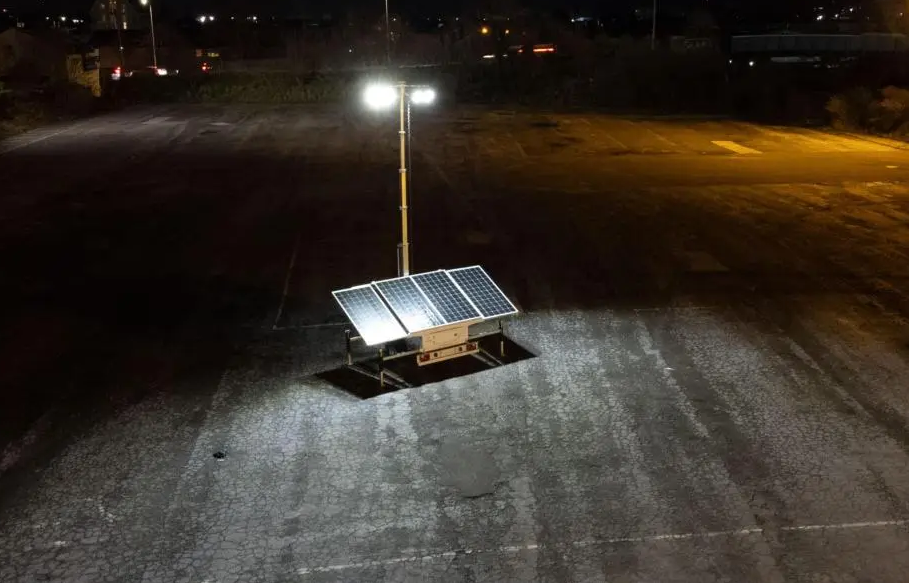
What is a Solar Hybrid Lighting Tower?
A solar hybrid lighting tower is a portable lighting system that combines solar panels, batteries, and traditional fuel generators. It uses solar energy as its primary energy source, automatically switching to a traditional fuel generator when solar energy is insufficient, ensuring continuous and stable lighting.
Solar hybrid light tower Key Features:
- Sustainable Development: Uses solar energy as the primary energy source, reducing carbon emissions and contributing to environmental protection.
- Dual Power Supply: Equipped with solar and traditional fuel power supply modes, ensuring normal use even on cloudy days or at night, with high reliability.
- Portable and User-Friendly: Compact structure, easy to transport and install, and can be quickly deployed in various environments.
- High Brightness Output: Provides bright lighting up to 20,000 lumens, meeting the needs of large-area illumination.
- Intelligent Control: Equipped with remote monitoring and control functions, allowing real-time adjustments to brightness and working modes, making it convenient and efficient to use.

Solar Light Tower Product Recommendation
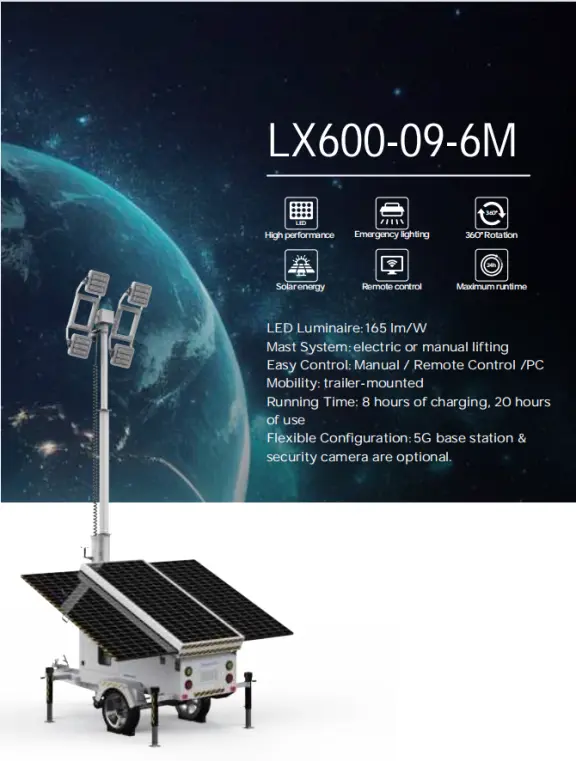
Solar Light Tower
LX600-09-6M sustainable lighting towers
6 meters high, 33,000 lumens bright, 700 square meters illumination range, suitable for small construction sites, outdoor activities, etc.
LX600-09-9M solar energy lighting towers
9 meters high, 66,000 lumens bright, 1500 square meters illumination range, suitable for large construction sites, large-scale activities, etc.
Solar+ Wind Hybrid Solar Tailers
Solar+ Wind Hybrid Solar Trailers are an integrated hybrid energy system combining solar and wind power, designed to provide off-grid electricity for remote areas, temporary construction sites, emergency rescue operations, and more.
Key Features
- Dual Energy Complementarity: Solar power during sunny days and wind power during cloudy or nighttime conditions, ensuring continuous power supply.
- Modular Design: Easy to transport, install, and expand, adaptable to various needs.
- Efficient Energy Storage: Lithium batteries store excess energy, ensuring power supply during periods without wind or sunlight.
- Smart Management: Real-time monitoring of energy production and consumption, optimizing efficiency with remote control capabilities.
- Eco-Friendly: Fully reliant on renewable energy, with zero carbon emissions.
Advantages
- High reliability: Dual energy complementarity ensures adaptability to various weather conditions.
- Flexibility: Modular design allows for easy transportation and installation.
- Cost-effective: Reduces reliance on diesel generators, lowering fuel and maintenance costs.
- Sustainable: Fully dependent on renewable energy, reducing carbon footprint.
Solar+Diesel Hybrid Solar Tailers
Solar+Diesel Hybrid Solar Trailers are an integrated hybrid energy system combining solar power and diesel generators, designed to provide flexible and reliable power solutions for scenarios requiring stable electricity. This system is particularly suitable for conditions with insufficient solar resources or high power demand, where diesel generators serve as a backup to ensure uninterrupted power supply.
Key Features
- Dual Energy Complementarity: Solar power as the primary source, with diesel generators as backup, ensuring continuous power during cloudy days, nighttime, or high-load periods.
- Energy Efficiency: Prioritizes solar power to reduce diesel consumption, lowering operational costs and carbon emissions.
- Automatic Switching: Intelligent control system automatically switches between solar and diesel modes, optimizing energy efficiency.
- Modular Design: Modular trailer design allows for easy transportation, installation, and expansion, adapting to various scenarios.
- High-Capacity Storage: Equipped with lithium battery storage to store excess solar energy, reducing diesel generator runtime.
Solar Hybrid Light Towers Application Areas:
- Construction Sites: Provides safe and efficient lighting, ensuring construction progress and safety.
- Outdoor Activities: Provides reliable lighting for music festivals, camping, sporting events, and other activities.
- Disaster Relief: Provides rapid lighting support in emergency situations, assisting in the smooth carrying out of rescue work.
- Temporary Lighting: Suitable for temporary lighting needs during holiday activities, exhibitions, markets, etc.
Hybrid lighting towers Future Prospects:
With the continuous development of solar energy technology and people’s increasing emphasis on sustainable development, solar hybrid lighting towers will have broader application prospects. Luxman will continue to focus on technological innovation, constantly launching products with better performance and more complete functions, leading the development trend of sustainable lighting.
Conclusion:
Solar hybrid lighting towers, with their energy-efficient, reliable, and environmentally friendly characteristics, are becoming the beacon for the future of sustainable lighting. Luxman’s solar hybrid lighting tower series will provide you with reliable solutions, helping you achieve efficient and effective lighting needs while reducing environmental impact. Choose Luxman, illuminate a brighter future!
Call to Action
If you also want to contribute to sustainable development, please visit the Luxman website to learn more about our products and contact our professional team. We will wholeheartedly provide you with the most suitable lighting solutions, allowing you to work with Luxman to illuminate the path of a greener future together!
Related Hybrid light tower trailer information
Specification Sheet Download: Download The Specification File
Solar Light Tower Market: New Trends and The latest hot sale
Solar Security Tower: Mobile and Portable Security Tower Solutions
Contact form





